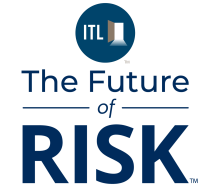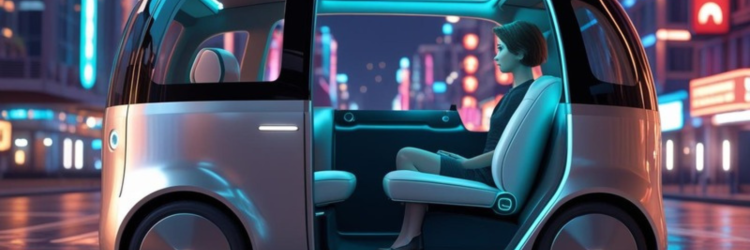Now that Elon Musk has finally begun a robotaxi service, after nearly a decade of hype, fans are declaring that we've entered a whole new world that will, among many other things, mean the phaseout of personal auto insurance.
The stock market seems to agree that what one analyst calls the "golden age of Tesla" is here: It carries a market cap of $1.09 trillion, and analysts say some 75% of that valuation stems from projections about the company's driverless technology.
I'm unconvinced, including for a reason that has been ignored in all the coverage I've seen.
I'll explain.
Let's start with the piece I think has been overlooked: the operational complexity of running a network of what Musk has said will be millions of Teslas owned by individuals who have made them available to function as robotaxis.
Even if you assume that Tesla's autonomous driving software works perfectly (which I'm not at all prepared to do), ponder for a minute all the work that has to go into managing a network of millions of cars that you don't own and have to essentially borrow from their owners.
I spent several months doing that sort of pondering with two colleagues as part of a consulting project in 2017 for a major company that was considering a big move into AVs, and potential problems popped up all over the place.
If a car needs to be recharged while in service, where does it go? Who plugs in the charger? How do you position cars so they can get to those hailing them as quickly as possible? How does rush hour complicate that positioning? How do you know when a kid covered in sand from a trip to the beach has shed in the car, or when a couple has sex in the back seat? Who cleans the car? What if it's used in a drug deal or other crime? How do you keep a group from carjacking the AV by having someone stand in front of it and behind it, knowing the car won't run them over? And on and on and on.
And those were just the problems facing a company that would have owned all its robotaxis. What Musk is promising is far more complicated.
What if I've declared my car available as a robotaxi for a stretch but want it back? What if I don't maintain my car as well as I should? How does Tesla enforce standards? Who is responsible for the depreciation on my car based on the miles spent to position it for ride hailers? How does Tesla deal with the fact that most rides are hailed during the same times of the day when owners are most apt to use them?
Basically, Tesla will have to build the equivalent of an air-traffic control system but on a far bigger scale. Musk is talking about coordinating tens of millions of rides per day, vs. 45,000 plane flights a day in the U.S. Airplanes travel point to point at assigned times, while Teslas will have to be able to go anywhere at any time. And automatic pilot software on airlines doesn't have to worry about pedestrians and bicyclists.
That system can be built, but it won't be easy and will take years to develop.
That timeline, alone, argues for dismissing the hyperbole about imminent disruption to personal auto insurers.
There's more, too. Tesla is years behind the competition. While Musk has long pointed to the inadequacies of competitors' capabilities, the Tesla rollout puts it about where Google's Waymo was in 2017. If you want to be charitable, you could say Tesla is where Waymo was as recently as 2020.
Tesla has about 10 robotaxis that have been operating in the wild since Sunday, while Waymo has more than 1,500 and has been offering autonomous rides for years — Waymo operates about 250,000 paid rides per week. Waymo's rides are fully autonomous, while Tesla has a monitor sitting in the passenger seat. The informed speculation is that Tesla also has someone remotely monitoring each car, with the ability to intervene if it makes a mistake; Tesla hasn't commented, as far as I can tell. Waymo operates in large areas of many cities, while Tesla is limited to a small section of Austin, Texas, away from downtown and other complexities (even though Musk has long said a car can't be considered autonomous if it's limited to a "geofenced" area that has been carefully mapped).
As I've written previously, I believe Tesla also faces an insurmountable technology problem. Musk took the cheap route on sensors, relying only on cameras, while Waymo and other competitors also use lidar, radar and high-definition mapping.
Musk fans argue that he has a massive data advantage because he has so many cameras on the road capturing data and has been running what is essentially a huge pilot for years, based on drivers who used early versions of his autonomous software. But early results haven't exactly been promising. Tesla vehicles being operated by that software have been involved in quite a number of accidents, including fatal ones, and Tesla's defense has been that it told drivers they couldn't trust the software.
Videos from the robotaxi rollout show a Tesla stopping abruptly twice for no apparent reason, once in the middle of an intersection. (Apparently, the robotaxi saw police cars in a parking lot adjacent to the roadway.) Other videos shared by riders showed robotaxis speeding (though moderately) and, in one case, getting confused at an intersection and driving into a lane for oncoming traffic.
That's just in the past two days, with only 10 cars on the road, operating in a tiny, uncomplicated, well-mapped area between 6 a.m. and midnight. And those sharing the problems are hardly critics; they were among the big fans selected by Tesla for early rides.
I'm not saying the robotaxi launch was a disaster. It wasn't. As Reilly Brennan, a prominent analyst in this space, says, "This wasn't the unsupervised dream realized, but if it wasn't Tesla I think people would be saying this was a solid mini launch."
Some go much further, especially on Wall Street, as this article in Quartz details. (If the surname in the byline looks familiar, that's because my daughter wrote it.) Goldman Sachs went on at length about the impact on insurers, saying auto insurance costs would plunge by 50%.
But some are even more cautious than I am, as the Quartz article also details. And if you want to get the really negative view, read this piece in Forbes, which dismisses the Tesla robotaxi as "not ready."
I come down on the side of Amara's law, as I usually do. It observes that technologies tend to be overhyped in the short term but underhyped in the long term. I firmly believe in the long-term prospects for autonomous vehicles, which will, among many other things, shift auto insurance from individuals to the makers of the software and the operators of the vehicles. But I see no need to hyperventilate about Tesla's robotaxi mini launch, no matter what Wall Street says.
As Phil Koopman, an expert about AV safety, wrote:
"This is an important first step for Tesla on the road to robotaxis. But as other companies have learned, this is the end of the beginning, and there is a very long road ahead to scale up to a viable product."
Cheers,
Paul


